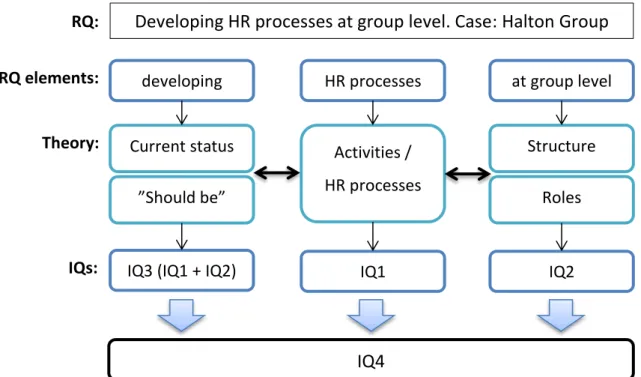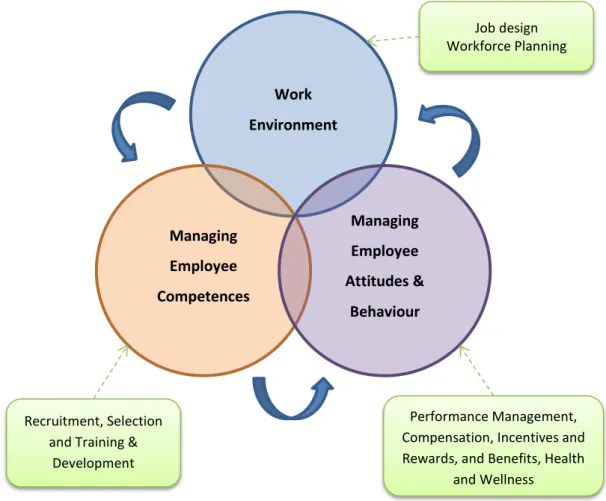The study focused on three main areas: the structure, role and activities of the HRM function in the Halton Group. The chapter will end with a list of key concepts relevant to the topic.
Background
The introduction provides an overview of the situation that led to the need for this thesis. First, the background of the topic is explained, followed by the introduction of the case company.
Case company
Halton Group has three strategic business areas (SBAs): Halton, Halton Foodservice and Halton Marine (Figure 1). As one of Halton Group's guiding principles is to be close to the customer, these SBAs operate worldwide (Rinne, December 11, 2015).
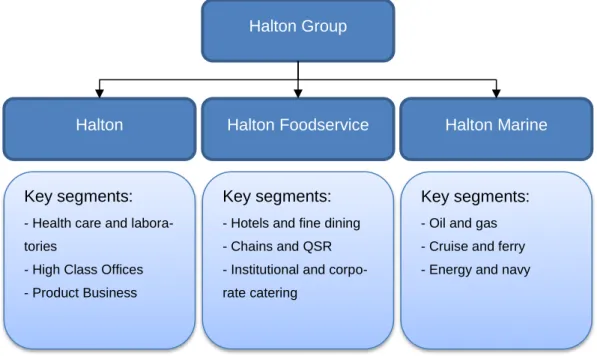
Research purpose and research question
What should be the key HR processes at group level, according to HR professionals and directors. What should be the key HR processes at group level according to HR professionals and directors.
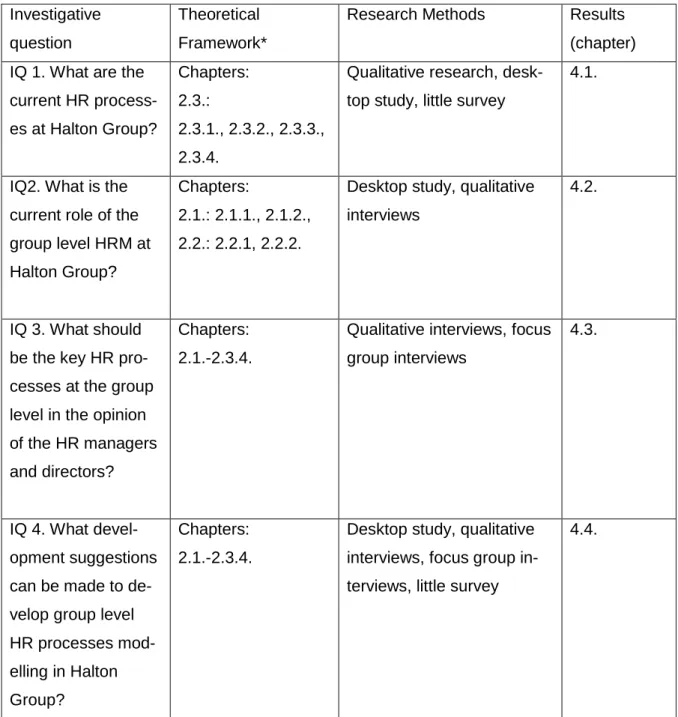
Delimitations and scope
In other words, this paper covers the internal analysis of structure, roles and activities (HR processes) as they provide tools to understand group level status. Activities are analyzed by analyzing HR processes at all levels of the organization with a framework created for this specific purpose.
Key concepts
Therefore, it is important to also cover the background of the HR processes for the basis of the analysis for the development of the key HR processes. Analysis on the role and structure of HR explains what the group HR means in the case company and the analysis of activities of HR concentrates on HR processes of the company.
HRM and its role in an organization
Defining HRM
Human resource management processes are only one, quite small, but still very important, part of the big picture of personnel management in organizations. These different approaches to definitions are based on the philosophy of human resource management as well as on the evolution of the HRM function and its role in an organization.
Roles of the HR function
The first three roles are supported by Analoui's description of the history of the development of HRM. The focus is on design rather than transactions and line managers are the customers of the managers and specialists who work in this chair.

Structures of HRM
HR systems
HR system explains how HR philosophies, external and internal environment, human capital management, corporate social responsibility, HR strategies, policies and practices and various HR processes are interconnected. HR philosophies with the external and internal environment create the basis for HR strategies, policies and practices, which then direct and define the areas of HR activities used by the company and further HR processes.
Structural factors affecting the HR systems
By core employees, Handy refers to the most important employees in the company, who are well-qualified people, often professionals, technicians or managers, and they are difficult to replace. The core employees usually have permanent contracts and are very committed to the company and its results.
HR processes – HR in practice
Defining HR processes
Companies often do not expect much from them and they are given little attention. They have skills that can be developed, dedication to give, talents and energy to offer if needed.
Areas of HR activities
The HR processes are referred to as a part of a larger entity, the HR system, and they cover different areas of HR activities in a systematic manner while the HRM process is the larger entity of managing employees. Appendix 2, which also explains the HR system, offers a way of grouping HR activities and thus also HR processes.
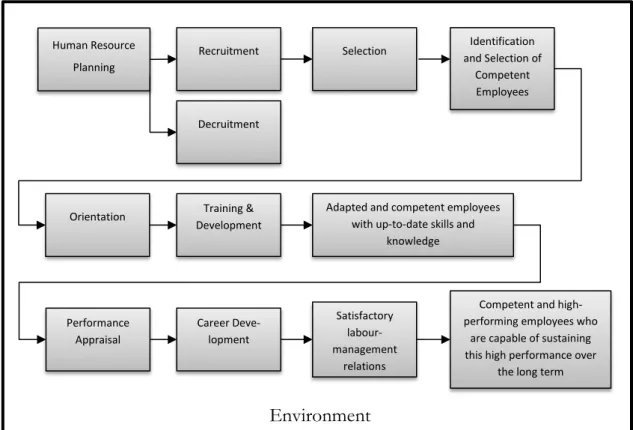
HR processes covered in this paper
In addition to the primary activities that are also part of personnel management in an organization, there are also various processes that are linked to the status of HRM in an organization (chapter 2.1). Therefore, this research also covers the following processes, which are represented in several academic books related to HRM (such as Armstrong 2012, Pilbeam & Corbridge 2006): talent management, e-enabled HR and internal-.
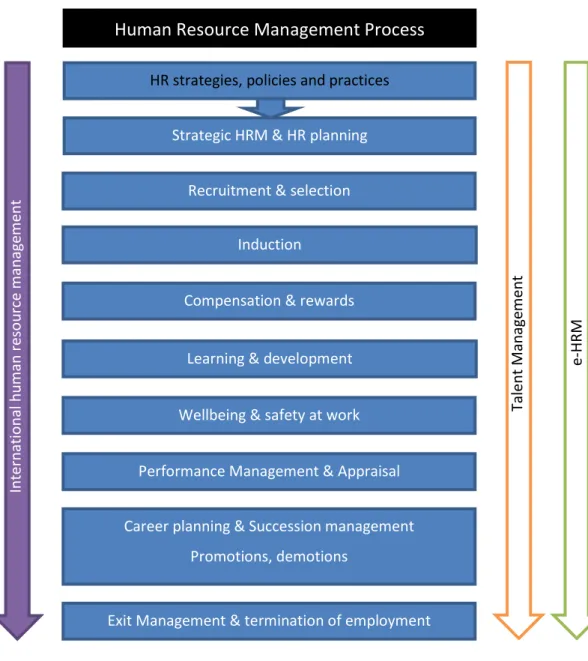
HR processes in details
Normally this is done through career planning, which defines career paths – the routes people can take to advance their careers within an organization. One of the most tangible examples of international human resource management is the expatriation process.
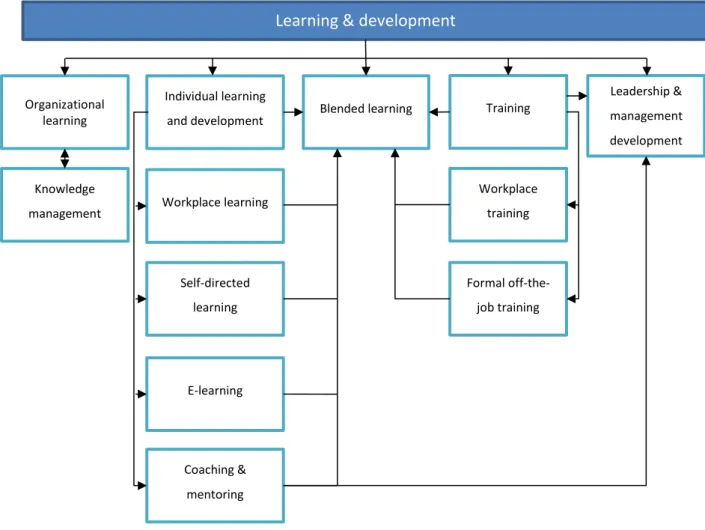
Research design
During the second phase, focus group interviews were conducted for the organization's HR managers and HR directors attending a global group HR meeting in Budapest. In this research, the approach was to increase knowledge about current, decentralized human resource processes and to provide developmental suggestions for them based on the application of the theories mentioned in chapter 2.

Data collection
The purpose of the workshop was to define the key HRM processes at the group level. A list of definitions of terms used in the interview was sent along with the list of questions.
Analysis methods
The last part of the interview was called conclusion and included questions related to general level HR processes, e.g. The analysis on IQ4 was based on the comparative analysis of the processes with the existing theories.
Validity, reliability and minimizing risks
These assumptions were based on the previous phases of the research and studies in HRM. In this chapter, the results of the study are presented research question by research question.
Current HR processes
Phase 1
The public web page did not include any section of HR or personnel, nor did it have any references to HR processes of the company. More analysis of the HR processes that fit the case company can be found from the analysis of IQ4.
Phase 3
One of the respondents added that training is also mandatory for employees. One respondent was very interested in the opportunities offered by e-learning platforms.
Conclusions
Two of those interviewed said they have sent people abroad and seemed more familiar with the process. In addition, not all interviewees seemed to take into account the possible differences in employee groups.
HRM’s current role at the group level
Phase 1
Measurability also seemed to be lacking in the processes as none of the interviewees indicated measurement as a step in the process. The fact that the HR director is part of the board of directors shows that the importance of HR must be accepted by the company.
Phase 3
The paper indicates that the nature of the HR group is strategic and directive by setting policies and guidelines and the activities appear to be decentralized. Some of the respondents pointed out that they can work for months without communicating with the group or other HR professional in the organization.
Conclusions
Some of the respondents also named people who do not work for the Halton Group but for an SBA as part of the HR group. This is understandable, because the interviewees also concluded that "the organizational structure is very confusing", as stated by one of the respondents.
Group HR’s wished role in the future
Phase 2
A general trend in explaining why a particular process is important and how it contributes to business processes has been to focus on motivation and how these processes provide future perspective. The words that were constantly repeated in the justification of why the process is important were equality, motivation, creating consistency, contribution to business processes, productivity, future needs and framework.
Phase 3
The last four processes are not researched in this paper according to the delineation (Chapter 1) and induction and exit management were not mentioned in these processes. Based on the comments received on why a process is important, the competence management, talent management, succession planning, workforce planning and training and learning processes can be linked together, because they were all chosen as a key process to ensure that the company has talent or powers in the future.
Development suggestions
The HR processes to be developed
It is also recommended to consider other areas of learning and development at group level. As mentioned in the theoretical framework (chapter 2.3.4), performance appraisals are only one part of the performance management process.
Group HR’s role in HR processes
One of the key recommendations for the group would be to take greater ownership of international human resource management processes. At a minimum, the group's role in core HR processes closely related to talent management should be clarified, and these processes could be aligned to ensure process quality.
Key findings
This chapter concludes the research by presenting the main findings of the research and providing some essential recommendations for the case company. If Halton Group wants to move to the next stage in the evolution of the HRM function, the next step would be to focus on the effectiveness of executive talent programs.
Recommendations for Halton Group
The majority of Halton Group HR professionals are generalists who operate between being a strategic HR business partner for the unit they work for and HR practitioners whose most important function is service delivery. The results showed that the role of the HRM function at the global level was operational; it aimed to deliver services to staff efficiently after rationalizing general positions and appointing business partners to reduce inefficiencies in service delivery.
Trustworthiness of the research
There are individuals with different areas of interest and expertise within the existing structure, so the Group can benefit from the talents it has more by working with them as experts at group level and strategic business partners at local level. At the beginning, the communication can take place through monthly HR meetings where the global HR team discusses best practices, challenges and news in a structured way.
Suggestions for further development and research
Evaluation of the thesis process and one’s own learning
Since the previous theory on the subject was limited, the definition of HR processes would have been enough of a scope for a bachelor's thesis. Strategic human resource management and planning, in (ed) L. Dyer, Human Resource Management: Evolving Roles and Responsibilities,.
Research tool
HR system
List and status of the HR processes used in the survey
Workshop slides
Interview questions
What kind of process or processes do you have related to employee welfare and safety? What kind of process or processes do you have associated with performance management or evaluation?
Sample 1: Forms used in the analysis – interviews
Sample 2: Forms used in the analysis – comparative analysis
